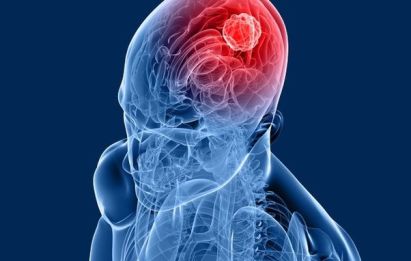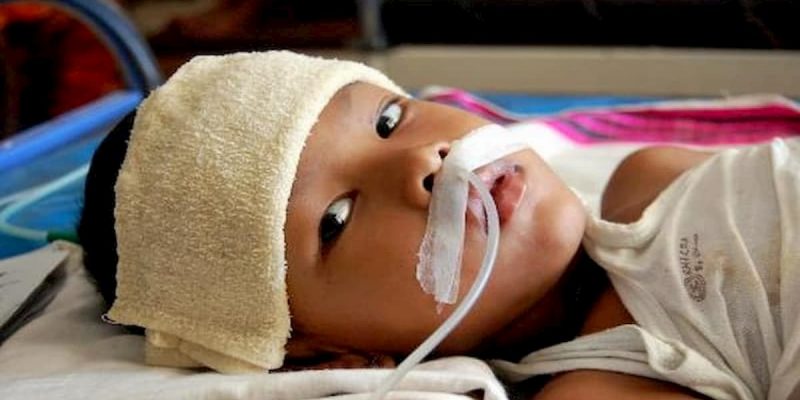Receiving radiation to the head would have a higher risk of developing a benign brain tumor in children, as do people who have certain rare genetic conditions such as Li-Fraumeni syndrome.
Benign Brain Tumor
A tumor is a mass of tissue that’s formed by an accumulation of abnormal cells. Normally, the cells in your body age, die, and replaced by new cells. With cancer and other tumors, something disrupts this cycle. Tumor cells grow, even though the body does not need them, and unlike normal old cells, they don’t die. As this process goes on, the tumor continues to grow as more and more cells are added to the mass.

Benign brain tumor usually have a distinct tumor border, and rarely spread or invade surrounding brain tissue. Though the word ‘benign’ may sound harmless, a benign tumor located in a vital area of the brain can be life threatening or fatal without treatment. No one knows what causes brain tumor; there are only a few known risk factors that have been established by research.
Some common signs of benign brain tumor include a headache, weakness, numbness, nausea, vomiting or seizures. Some individuals may not feel right cognitively or have visual, speech or coordination problems. The symptoms may be subtle or develop gradually.
Benign Brain Tumor Causes
Exposure to radiation. People who have been exposed to ionizing radiation have an increased risk of brain tumor. You can be exposed to ionizing radiation through high-radiation cancer therapies. You can also be exposed to radiation from nuclear fallout.
Chemical exposure. Being exposed to certain chemicals, such as those you might find in a work environment, can increase your risk for this disease.
Family history. Only about 5 to 10 percent of all cancers are genetically inherited, or hereditary. It’s rare for a brain tumor to be genetically inherited. Talk to your doctor if several people in your family have been diagnosed with a brain tumor. Your doctor can recommend a genetic counsellor for you.
Symptoms of Benign Brain Tumor
The benign brain tumor are determined using MRI and CT scans. This tumor usually grows slowly, but it does not attack the tissue area or spread to other organs. The most common brain tumor can be removed and usually, it will not repeat after removal. The exact cause of benign tumor can not be identified, but researchers have suggested that risk factors may come from family history, exposure to radiation and chemistry.

Signs of benign brain tumor are usually not specific. Here is a list of symptoms that, alone or combined, can be caused by a weak brain tumor. Unfortunately, these symptoms can also occur in many other diseases:
- A headache
- are worse in the morning when waking up
- occur while you’re sleeping
- are made worse by coughing, sneezing, or exercise
- Facial paralysis
- Uncontrollable movements
- Hand tremors
- Vision problems
- Hearing problems
- Vomiting or nausea
- Self-balance problems
- Numbness in extremities
- Muscle jerking and seizures
- Eye problems, such as drooping eyelids and unequal pupils
- Changes in mental ability such as memory, speech, and concentration
Benign Brain Tumor in Children
Astrocytomas are usually non-cancerous benign brain tumor in children, slow-growing tumor. They commonly develop in children ages 5 to 8. Also called low-grade gliomas, these are the most common benign brain tumor in children.
Ependymomas are a type of childhood brain tumor that can be benign brain tumor in children or cancerous. The location and type of ependymoma determine the type of therapy needed to control the tumor.
Brainstem gliomas are rare tumor that occurs almost only benign brain tumor in children. The average age at which they develop is about 6. The tumor may grow very large before causing symptoms.
Medulloblastomas are the most common type of childhood brain cancer. Most medulloblastomas occur before age 10.
Signs or symptoms vary depending on a child’s age and the location of the tumor, but may include:
- Vomiting
- Seizure
- A weakness of the face, trunk, arms, or legs
- Slurred speech
- Difficulty standing or walking
- Poor coordination
- A headache
- In babies and young toddlers, a rapidly enlarging head.
How are brain tumor diagnosed?
Diagnosis of brain tumor begins with physical tests and sees your medical history. Physical exams include highly detailed neurological examinations. Your doctor will take the exam to see if your cranial nerve is intact. This is the nerve that comes from your brain.
Your doctor will look in your eyes with the ophthalmoscope, which is a tool that illuminates the light through your pupils and into your retina. It also allows your doctor to look straight into your eyes to see if the optic nerve swelling. When stress increases in the skull, changes in the optic nerve can occur.
CT scan is a way to get your body scan more granular than X-ray machines. This can be done with or without contrast. Contrast is achieved in the head CT scan using a special dye that helps doctors see some structures, such as blood vessels, more clearly.y
Treatment of the benign brain tumor
Treatment of benign brain tumors depends on the type of tumor, the size of the tumor, the location of the tumor and your overall health. Not all benign tumors need treatment. If your tumor is small and does not cause any symptoms, your doctor may recommend taking a viewing and waiting for approach. In this case, treatment can be riskier than letting the tumor become. Some tumors will not need treatment.
If your doctor decides to undergo treatment, specific treatment will depend on the location of the tumor. If it is located on the face or neck, it can be removed for cosmetic reasons. Other tumors that affect the organs, nerves, or blood vessels are usually removed by surgery to avoid further problems.
Tumor surgery is often performed using endoscopic techniques, which means they are contained in tools such as tubes. This technique requires smaller surgical incisions, if present at all, and lack of healing time. If surgery is unable to access your tumorsafely, your doctor may prescribe radiation therapy to reduce its size or stop it from growing larger. While maintaining a healthy lifestyle, exercising, and eating a balanced diet can prevent health problems including some types of cancer, there is no alternative or alternative medicine for your own benign tumor.
How much does it cost to treat benign brain tumor?
While many growths of tumors will turn out to be benign, it is still a good choice to make an appointment with your doctor as soon as you detect new growth or symptoms that may indicate tumors. It is also important to make an appointment with your doctor if you see any changes in tumors that have previously been diagnosed as benign, including growth or symptom change.
Some types of benign tumors can become cancerous over time, and early detection can make all the difference. One of the ways to know the overall cost of this treatment is best to check with the hospital.

Who can help you with this cost
Financial Security – It is There When Needed
Levine can help you to protect yourself and the future of your loved ones. Get immediate financial security. Don’t touch your savings. Let insurance provide it.
She can help provide financial security in times of hardship and will be able to ease the financial burden of your dependents in your absence.
Contact our AIA INSURANCE AGENT LEVINE LEE to get in touch with us and start your personal coverage, group coverage or choose your plan now. Get covered correctly. Be advised correctly. Call Levine Lee (+6012-684 0948) today to be advised on the best insurance protection personalized for you. Or send us the form below on your interest.

At Red Cover Life Planning, we emphasize our people- helping them grow, expanding their abilities, and discovering new opportunities. Join us now to be part of our team and story.








